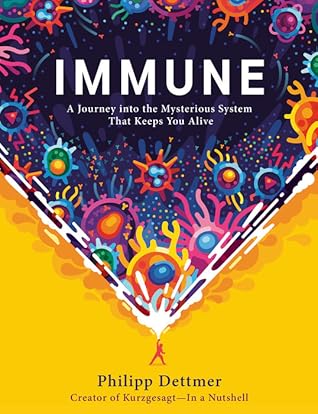Activation usually begins with an initial exposure of immune cells to intruders, like bacteria, or danger signals, like the insides of dead cells. For example, Macrophages get activated when they notice an enemy and release cytokines that call up Neutrophils and cause inflammation. The Neutrophils themselves release more Cytokines, causing more inflammation and reactivating Macrophages, who continue fighting. Complement proteins stream into the site of infection from the blood, attack pathogens, opsonize them, and help the soldier cells to swallow the enemies. Dendritic Cells sample enemies
...more
Welcome back. Just a moment while we sign you in to your Goodreads account.


